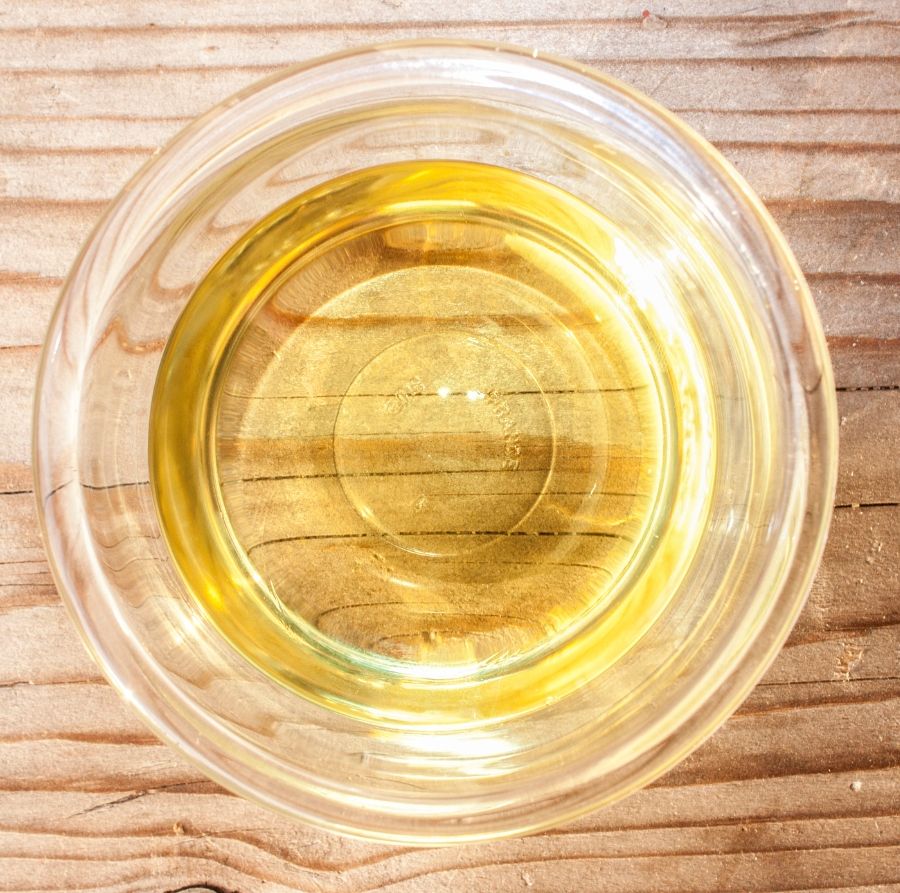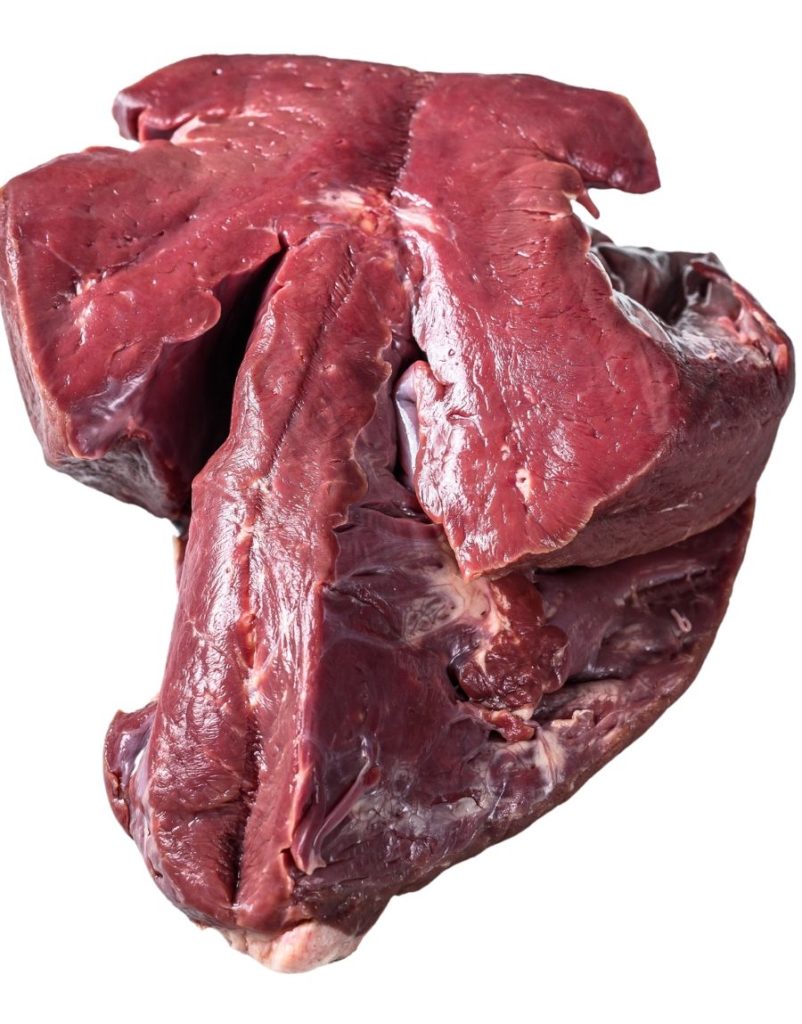Liver is a very nutrient-dense organ meat mainly used to provide protein, vitamins, minerals, or natural flavor. In this blog post, we will explore the benefits of liver in dog food.
Contents
Benefits of Liver in Dog Food
Liver is a common ingredient in dog food, and for good reason.
As an organ, the liver is the hepatic gland of an animal. It’s vital for nutrient metabolism or the removal of toxic substances.
As food, liver is a nutrient-rich organ meat that can provide a range of essential nutrients to your dog’s diet.
And dogs like the smell and taste of liver. Chicken liver, for example, is highly palatable and can be included as a digest or as chicken liver meal, a dried and ground flavor powder.

Animal liver is an excellent source of lean high-quality protein and beneficial fatty acids. It’s an exceptionally nutritious ingredient.
Liver contains large amounts of vitamin B12. It also provides other B vitamins as well as vitamins A and D. And it’s rich in trace minerals like phosphorus, iron, copper, magnesium, and iodine.
Additionally, animal liver is highly palatable and adds some “natural flavor” to dog food. Many recipes use some liver flavor or liver digest to make a product more appetizing to dogs.
Hydrolyzed chicken liver is highly digestible and the main protein source to prepare food flavorings for dogs[2,3].
Also, liver is easily digestible and used in many different forms such as liver oil, hydrolyzed liver, freeze-dried liver, liver broth, or as ground and dried liver.
Livers are actually a meat by-product and therefore part of many animal by-product meals.
Liver Oil in Dog Food
Liver oils are used as nutritional supplements. They are produced by simmering ground liver until the fat starts to separate, by pressure extraction or other methods.
A few recipes use chicken liver oil or salmon liver oil but the most common liver oil in dog food is cod liver oil.

Cod liver oil is derived from the liver of the Atlantic cod (Gadus morhua), a marine fish native to the Atlantic Ocean.
This fish liver oil contains lots of the omega-3 fatty acids eicosapentaenoic acid (EPA) and docosahexaenoic acid (DHA).
It’s also especially rich in vitamin A and vitamin D and a good source of energy.
Liver Hydrolysate in Dog Food
Hydrolyzed liver is the product of hydrolysis, meaning the liver proteins have been broken down using enzymes, acids or heat.
Liver hydrolysate is hypoallergenic, contains lots of highly digestible amino acids, and provides great flavor.
In moderate amounts, ingredients like poultry liver hydrolysate or hydrolyzed chicken liver can add lots of protein.
In small amounts, it’s likely added as a flavoring, for example as chicken liver digest.
Liver in Dog Food
Liver gets dried and ground before being used in dog food.
If you find only “animal liver” on the ingredient list, it is a mystery meat that may be made from very different sources or qualities.
Animal liver is still a nutritious ingredient in dog food, but we recommend finding a recipe with named ingredients.
Poorly sourced liver may be contaminated with heavy metals. In contrast, some manufacturers use organic liver in their recipes.
And liver can be high in purines, if that maters for your dog.

Liver in dog food can come from many different animal sources that can somewhat vary in their average nutrient content.
For example:
Chicken Liver is an excellent source of lean high-quality protein, beneficial fatty acids, and many vitamins as well as trace minerals like phosphorus, iron, or magnesium.
But in comparison, beef liver contains the greatest amount of copper per serving of any food. And pork liver contains a very large amount of vitamin A and is loaded with iron.
Some formulas use liver as their first ingredient. But remember, liver contains lots of water which will cook off during processing.
| Chicken | Beef | Pork | |
|---|---|---|---|
| Water | 76.5 g | 70.8 g | 71.1 g |
| Protein | 16.9 g | 20.4 g | 21.4 g |
| Fat | 4.83 g | 3.63 g | 3.65 g |
| PUFA | 1.31 g | 0.47 g | 0.87 g |
| Mineral | 1.06 g | 1.31 g | 1.44 g |
| Vitamin B12 | 16.6 µg | 59.3 µg | 26 µg |
| Vitamin A | 3300 µg | 4970 µg | 6500 µg |
| Iron | 8.99 mg | 4.9 mg | 23.3 mg |
| Phosphorus | 297 mg | 387 mg | 288 mg |
| Potassium | 230 mg | 313 mg | 273 mg |
| Sodium | 71 mg | 69 mg | 87 mg |
| Copper | 0.49 mg | 9.76 mg | 0.68 mg |
| Magnesium | 19 mg | 18 mg | 18 mg |
PUFA: Polyunsaturated fatty acids.
Further Reading
[1] U.S. Department of Agriculture. Agricultural Research Service. FoodData Central. 2019. fdc.nal.usda.gov
[2] Tao Feng et al. Preparation and evaluation of mushroom (Lentinus edodes) and mealworm (Tenebrio molitor) as dog food attractant. Heliyon. 2020. https://doi.org/10.1016/j.heliyon.2020.e05302
[3] Fredrich Dourado Pinto et al. Characterisation of spray dried hydrolysed chicken liver powder: effects on palatability and digestibility when included as single source of animal protein in dog diets. Italian Journal of Animal Science. 2021. https://doi.org/10.1080/1828051X.2021.1993091
